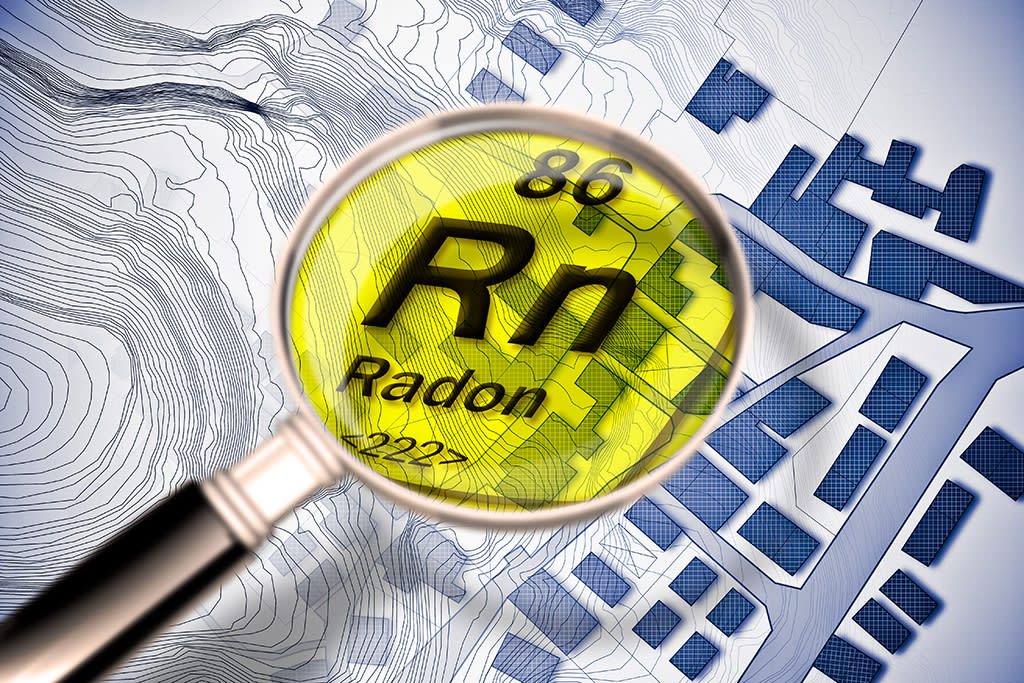Buying a new home? Here’s why you should test for this odorless gas

August 1 is World Lung Cancer Day. This year’s focus is about highlighting new lifesaving advancements in lung cancer.
Buying a new home can be overwhelming in the best of circumstances. While you’re gearing up to move, there are multiple bills to pay, taxes to think about, and a slew of tests to ensure your new home is safe for you and your family.
During this time, you’ll likely rely on your real estate agent to help you determine which tests you actually do — and don’t — need. But while some real estate agents will say you can skip radon testing when you buy a new home, that’s advice you definitely don’t want to heed.
Radon testing looks for high levels of radon, a naturally-occurring radioactive gas. You can’t see it or smell it, but radon can build up in homes over time to dangerous levels, according to the American Lung Association (ALA). Radon exposure is serious: Even though it doesn’t cause short-term symptoms, it can cause lung cancer over time.
In fact, it’s the second leading cause of lung cancer in the U.S., the ALA says. People who have never smoked make up approximately 2,900 of the estimated 21,000 radon-related lung cancer deaths each year.
“Radon is one of the high risk factors for lung cancer,” Myrna Godoy, MD, PhD, an associate professor in the department of diagnostic radiology at The University of Texas MD Anderson Cancer Center, tells Yahoo Lifestyle.
How does radon build up in homes?
Radon gas is found in soil and it’s produced during the radioactive decay of elements found in the soil, specifically thorium and uranium, Matthew Schabath, PhD, a cancer epidemiologist at Moffitt Cancer Center, tells Yahoo Lifestyle. That gas can build up over time in homes, where it can make you sick.
“All humans are exposed to [some levels of] radon gas and there are substantial geographic variations globally and throughout the United States,” Schabath explains. “Studies around the world have reported that indoor radon exposure is associated with a 14 to 29 percent increased risk of lung cancer.”
Radon “tends to be concentrated in basements,” Raymond Casciari, MD, a pulmonologist at St. Joseph Hospital in Orange, Calif., tells Yahoo Lifestyle, but it can build up in any part of your home.
How does radon gas exposure lead to lung cancer?
Radon gas breaks down into radioactive elements called “radon progeny,” Schabath explains. “Radon and radon progeny can be breathed into the lungs and, since they are radioactive, can cause DNA damage in the cells of the lungs. Over time, with enough exposure and DNA damage, lung cancer can occur.”
How can you keep yourself safe?
Getting your home tested is a crucial first step, Casciari says. Testing is the only way to determine if you have a problem and, it’s worth noting, your house can have elevated radon levels while your neighbor’s does not.
Radon gas is measured in picocuries per liter (pCi/L) of air. The Environmental Protection Agency recommends reducing radon if the result is 4.0 pCi/L or greater and to consider doing the same when the radon level is between 2 and 4.0 pCi/L. However, the ultimate goal is to get your radon level to the lowest level possible, the ALA says.
Even if you’re not buying or selling a home, it’s a good idea to test your place periodically, Schabath says. You can order do-it-yourself radon detection kits online or buy one in a hardware store, or even hire a professional to do it for you. “A follow-up test is recommended if a reading of 4.0 pCi/L or higher is found; this is the level considered to be high-risk,” Schabath says. “If the levels are low, periodic testing every few years is a good practice.”
If your home has elevated levels of radon, you don’t have to move — but you do need to take action. You can fix the issue by installing a radon mitigation system, which consists of a vent pipe, a fan, and sealing any cracks. The system collects radon gas from underneath your home’s foundation and vents it outside of your house, the ALA explains. And, if you’re building a new home, it’s a good idea to ask the contractor to install radon-resistant features like gravel and plastic sheeting below the foundation, as well as a vent pipe.
So, if you’re buying or building a new home, make sure you undergo radon testing. It’s inexpensive, and it could make a big impact on the health of you and your family down the road.
Read more from Yahoo Lifestyle:
Mosquito-borne virus that causes brain swelling, death in humans detected in Florida
What are brain-eating amoebas — and how can you protect yourself?
Follow us on Instagram, Facebook and Twitter for nonstop inspiration delivered fresh to your feed, every day.
